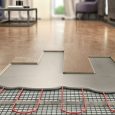Before you scroll down to know how to use a jigsaw, you should know why you will need a jigsaw? There are a few reasons why you should include a jigsaw on your tool list. If you are a woodworker or a DIY’er who loves doing anything, you will need a jigsaw on your toolbox must. You can find a great variety of them on Tool Inspector.
The jigsaw can cut different materials in perfect shape. If you need to add anything or cut from a piece of furniture, you can use the jigsaw. You can use the jigsaw for multipurpose. You can cut plastic, metal, wood, anything with the jigsaw. Not only that but you can also try the different types of cutting methods with the jigsaw. As the jigsaw has got the easy adjustment, you can make angled cut, bevel cut, straight cut, and anything with the jigsaw.
Jigsaw is popular for the detailed cut. It is widely used for detailed and decorative cuts. This is the least intimidating power tool. So, if you haven’t used the power tool before, there, is nothing to be worried about. You can always get the best cut using this superb tool.

Different parts of the jigsaw
A jigsaw consists, of different types of parts. The parts of the jigsaw are-
- Variable speed dial
- Lock-on switch
- Trigger switch
- Orbital adjustment knob
- Blade
- Blade Clamp
- Base
The use of jigsaw blade
The blade is the most important part of the jigsaw. So, you should know the use of a jigsaw blade properly before knowing how to use a jigsaw.
The blade is one of the most confusing parts of the workers. But once you understand the basics of the blades, you can easily know how to use them. You will get a wide range of blades on the market which is compatible with the jigsaw. And on the body of the blade, it is written whether it be used for the wood or metal. So, there is no chance of any confusion.
The most important thing about the blade is to remember the TPI. TPI means teeth per inch. With the teeth of a blade, you should understand which type of cut it will provide. If a blade has few teeth, it will provide you with a smooth and fine cut. If the blade has more teeth, it will provide a rough cut.
How to Use a Jigsaw
The jigsaw is a versatile power tool that is used to cut different materials in perfect shape. To use a jigsaw properly, you will need to have a blade. In this article, you will know how to use a jigsaw to get bevel and compound cut in different materials.

Infographic Credit: – Tools Adviser
How to change a blade?
Changing a jigsaw blade is simple. To change a blade, you must push the spring-loaded clamps to the blade guide at first. Then you must slide the blade in and then release the clamp. Then you must pull the blade to check if it is placed properly. While sliding in the blade, you need to keep the teeth in an up position.
How to cut with a jigsaw?
After knowing the basics of a jigsaw, now you are all set to cut with a jigsaw. Cutting with a jigsaw is quite simple. You don’t need to have any special skills to cut with the jigsaw. But you will need to have a workstation and clamp to cut with a jigsaw. As the simple process of cutting with a jigsaw is discussed below-
- At first, you will need to clamp down your work piece.
- Then you will need to adjust the orbital action of your jigsaw.
- Then you will need to insert your blade inside the saw.
- After inserting the battery, you will need to insert the battery.
- After inserting the battery, you must place the edge of the base properly on your work piece. While placing the edge, you also must make sure the blade is not touching your work piece.
- Then you must pull the trigger of the blade. You should run the blade at full speed before making any connection between the blade and the work piece. Using an edge guide, you will be able to cut with the jigsaw in a straight line.
- After getting done, you must wait for the blade to stop completely, and then you should lift the blade from the workbench.
- When you are done cutting, you must remove the batteries from the jigsaw for safety purposes.
So, this is a simple procedure of using a jigsaw and getting a perfect cut with it.




